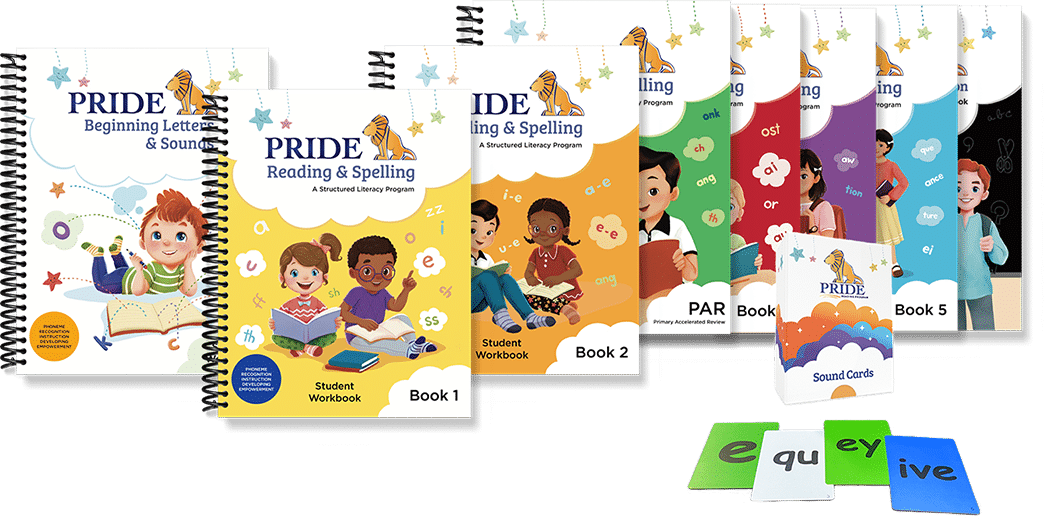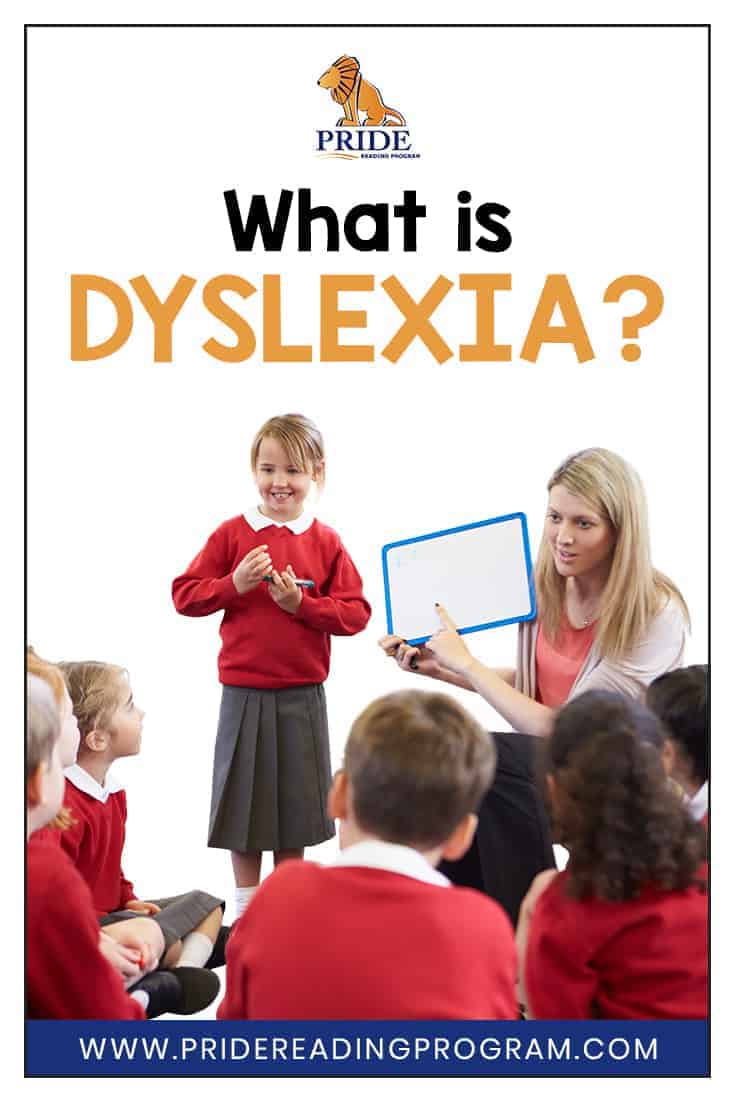Dyslexia is a common learning difference that makes it difficult to work with language. Children with dyslexia often have trouble reading words fluently and struggle with phonological awareness, spelling and decoding. Dyslexia has nothing to do with intelligence, it is simply a different type of language processing. Children with dyslexia are very capable of learning, they just need a different approach.
What are the Common Signs of Dyslexia?
The common signs of dyslexia are somewhat difficult to recognize until a child enters school, but some early clues can begin as early as preschool. Here are five major dyslexia common signs to look for in a school-age child:
1. Difficulties with Phonological Awareness
If a child has difficulties learning and remembering the names and sounds of letters in the alphabet or struggles with phonological awareness activities, it could be a sign of dyslexia. Examples of phonological awareness activities are:
- What word would be left if the /h/ sound were taken away from the word hat?
- Do pig and pen start with the same sound?
- Do sip and tip end with the same sound?
- How many sounds do you hear in the word land?
- What word would you have if you changed the /p/ in pig to /w/?
- Tell me as many words as you can that rhyme with the word cake.
2. Difficulties Recalling Words When Talking or Writing a Story
“Mom, can you get me that thing?” or “Hand me that stuff.” If simple words don’t always flow out of a child’s mouth easily, it could be a sign of dyslexia.
Children with dyslexia fill their sentences with pronouns or words lacking in specificity. Filler words like “um” may be used to take up time while the child tries to remember a word. A child with dyslexia know exactly what they want to say, but they struggle to pull out the right words.
When a dyslexic child is asked to write a story, quite often they can’t think of the word they want to use or can’t figure out how to spell it. Recalling names, reciting the months of the year in order, or even remembering the days of the week can be a real problem for a dyslexic child.
3. Difficulties with Spelling
If a child spells words exactly as they sound without applying any spelling rules, it could be a sign of dyslexia. These children use highly phoneticized spelling when writing. For example, sed for said, or shud for should is a common difficulty.
Children with dyslexia also have difficulties distinguishing among homophones, such as there and their.
These kids might also reverse the order of two letters, especially when they involve double vowels, writing dose for does. Sometimes, the vowels are just left out altogether.
4. Difficulties with Writing
If a child has really poor, illegible handwriting filled with spelling errors, it could be a sign of dyslexia. Some of the main signs of this poor handwriting called Dysgraphia, include:
- tight and unusual pencil grip
- letters are written with unusual starting and ending points
- unusual spatial organization on the paper and not following the margins or keeping the letters on the lines.
- difficulties with punctuation, not applying capital letters, and adding major run-ons and sentences with fragments.
5. Difficulties with Reading
If you notice that a child is having difficulties learning to read, including struggling with sounding out words and reading fluency, it could be a sign of dyslexia.
Individuals with dyslexia have a really hard time decoding new words, or breaking down words into chunks and sounding them out. When the decoding process isn’t strong, the reading fluency process cannot develop.
How Does a Child with Dyslexia Learn to Read and Spell?
For many of us reading just comes naturally. We automatically break up words into syllables, apply spelling rules, and understand the concept of language. Learning to read with dyslexia is not a natural process. These children must be taught reading and spelling explicitly and directly.
Multisensory Learning
Multisensory learning will benefit a child with dyslexia. When taught with a multisensory approach, the child learns all the letters, letter combinations, sounds, and words by using their visual, auditory, tactile, and kinesthetic pathways.
They see it, say it, hear it, and move with it.
When learning the vowel combination ‘oa’ for example, the child might first look at the letter combination of a picture of a GOAT, then close their eyes and listen to the sound, then trace the letters in the air while speaking out loud.
Orton-Gillingham Structured Literacy
Orton-Gillingham is an approach used to teach students who are struggling with reading and spelling. Although this approach will work with all students, it is primarily used with dyslexic students or students with reading disabilities. Orton-Gillingham is often used in one-on-one tutoring, in small group instruction, and even in the mainstream classroom.
The Science of Reading
The Science of Reading is a term that refers to research that has been conducted over the past twenty years by leading reading experts, cognitive scientists, and reading researchers on how children learn to read.
According to the International Dyslexia Association, Guided Reading or Balanced Literacy, are not effective for children with dyslexia because they do not focus on the decoding skills these children need to succeed in reading.
Students with dyslexia will need a reading program that is aligned with the science of reading.
How Common is Dyslexia?
According to Dr. Sally Shaywitz, from the Yale Center for Dyslexia and Creativity, as many as one in five children have dyslexia and affects girls and boys equally. This means that more than two million school-age children in the United States have dyslexia.
Although children with dyslexia typically have average to above-average intelligence, dyslexia creates difficulties not only with reading, writing, and spelling but also with speaking, thinking, and listening.
Dyslexia varies in degree of severity and is highly hereditary. It is not uncommon for a child with dyslexia to have an immediate family member who also has this condition. Also, it is not unusual for two or more children in a family to have dyslexia. The degree of severity will differ from child to child.
What are the Challenges of Dyslexia?
Many times the academic challenges for dyslexics can lead to emotional and self-esteem issues. Low self-esteem can lead to poor grades and low achievement. Dyslexic students are often considered lazy, rebellious, or unmotivated by their teachers or parents. These misconceptions cause rejection, isolation, feelings of inferiority, and discouragement.
In many cases, before a dyslexic child enters school, they are described as eager, bright, and curious, which are all characteristics that would seem to promote success in school. Over time, however, this inquisitive and positive nature can decline and be replaced by frustration, despair, and self-defeating coping mechanisms.
For this reason, it is so important for parents and teachers to address these concerns to support a child’s social and emotional needs in addition to providing effective reading intervention aligned with the Science of Reading as soon as possible.
What are the Benefits of Dyslexia?
Although dyslexia can impair spelling and decoding abilities, it also seems to be associated with many strengths and talents. People with dyslexia often have significant strengths in areas controlled by the right side of the brain. These include artistic, athletic, and mechanical gifts.
Individuals with dyslexia tend to be very bright and creative thinkers. They have a knack for thinking, “outside the box.” Many dyslexics have strong 3-D visualization ability, musical talent, creative problem-solving skills, and intuitive people skills. Many are gifted in math, science, fine arts, journalism, and other creative fields.
Many people with dyslexia have gone on to accomplish great things. Among these successful dyslexics are Charles Schwab, Richard Branson, Stephen Spielberg, Thomas Edison, and F. Scott Fitzgerald.
I Have a Resource for You…
Thank you so much for reading my post today. You might also be interested in my previous posts:
The Science of Reading: What All Teachers Should Know
How Children Learn to Read: A Guide for Parents and Teachers
Please don’t leave without checking out the PRIDE Reading Program. This is an Orton-Gillingham curriculum that is used by teachers, tutors and homeschooling parents worldwide with great success.


Karina Richland, M.A., is the author of the PRIDE Reading Program, a multisensory Orton-Gillingham reading, writing and comprehension curriculum that is available worldwide for parents, tutors, teachers, and homeschoolers of struggling readers. Karina has an extensive background in working with students of all ages and various learning modalities. She has spent many years researching learning differences and differentiated teaching practices. You can reach her by email at info@pridereadingprogram.com or visit the website at www.pridereadingprogram.com


How do I, teach my child to read when I myself am dyslexic? My weak point is reading and comprehension.
Alexis, the PRIDE Reading Program is 100% scripted. You follow the script, which will allow you to teach your child to read and help you with reading and comprehending as well. Everything in this program is laid out for you step by step. You will never feel overwhelmed. Each lesson includes everything you need to teach with confidence!